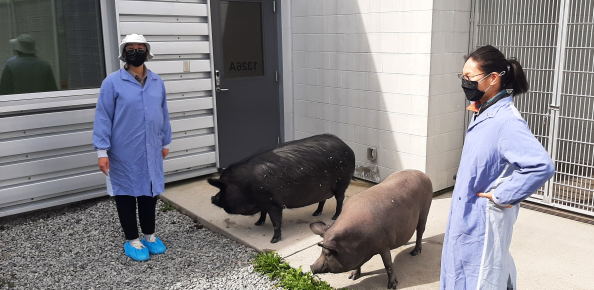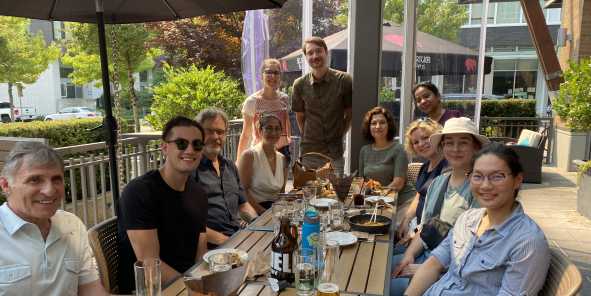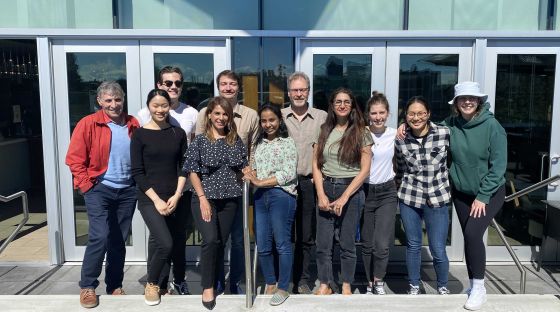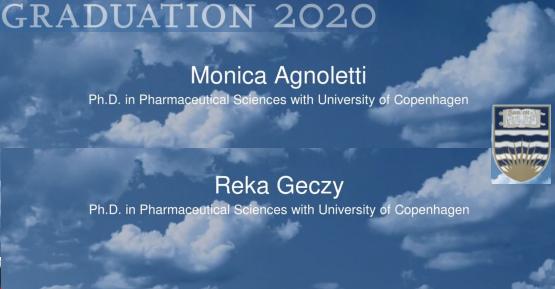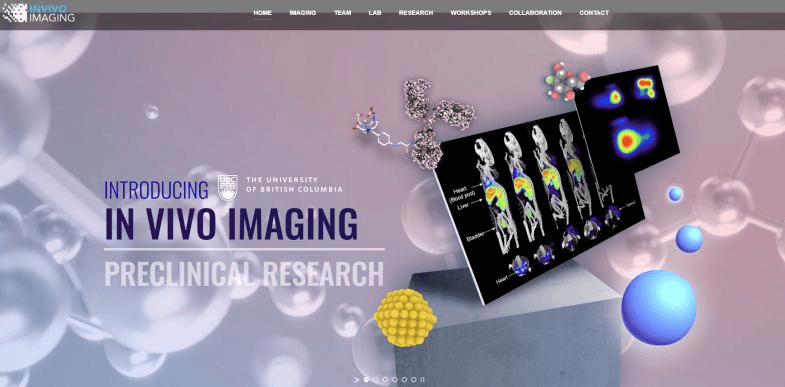
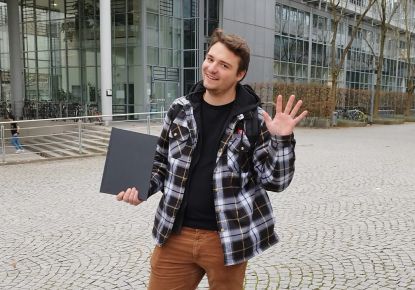
Lukas Finger successfully defended his Masters work done in our lab on February 22, 2024 at LMU in Munich, Germany. Congratulations!
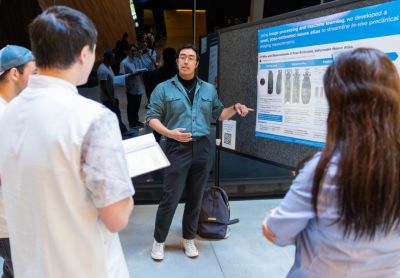
Andy Zhao explaining his summer student project to the poster competition jury. He won second prize for it on September 20, 2023.
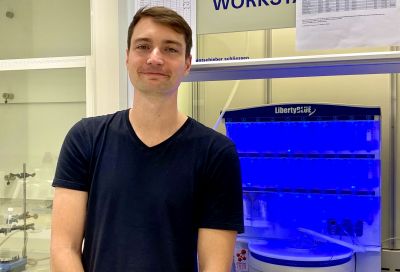
Congratulations to Lennart Bohrmann who defended his Ph.D. remotely, from Basel, on August 30, 2023!

Imaging Is Our Main Business
For most of our research, the Hafeli lab uses SPECT/PET/CT imaging as a fully quantitative imaging method to evaluate our novel radiopharmaceuticals, determine a drug and/or drug carrier's dynamic fate in a mouse or rat, and to diagnose disease, follow therapeutic approaches and improve on current medical procedures.
Please check out our scanner by clicking on the picture above. Also, we are always interested in collaborating with you if you have an interesting drug delivery system and would like to watch how it performs in vivo. Just email us if you are interested.
Our Best Paper Ever
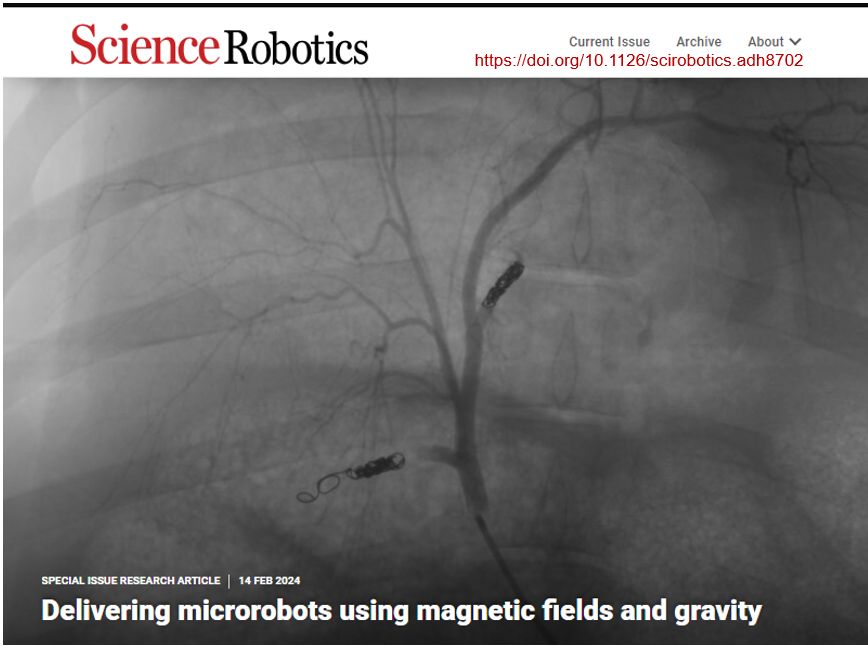
The idea of injecting microscopic robots into the bloodstream to heal the human body is not new. It’s also not science fiction. Guided by an external magnetic field, miniature biocompatible robots, made of magnetizable iron oxide nanoparticles, can theoretically provide medical treatment in a very targeted manner.
Until now, there has been a technical obstacle: the force of gravity of these microrobots exceeds that of the magnetic force, which limits their guidance when the tumour is located higher than the injection site. While the magnetic field of the MRI is high, the magnetic gradients used for navigation and to generate MRI images are weaker.
“To solve this problem, we developed an algorithm that determines the position that the patient’s body should be in for a clinical MRI to take advantage of gravity and combine it with the magnetic navigation force,” said Dr. Gilles Soulez, a researcher at the CHUM Research Centre and professor at Université de Montréal. “This combined effect makes it easier for the microrobots to travel to the arterial branches which feed the tumour,” he said. “By varying the direction of the magnetic field, we can accurately guide them to sites to be treated and thus preserve the healthy cells.”
Our lab made the magnetic microspheres for our collaborators in Montreal. We are very proud of their in vivo work! And if you want to read it for yourself, see here.
Vancouver Nanomedicine Day 2023 Was a Huge Success
 The Vancouver Nanomedicine Day 2023 was again organized by our lab and took place in our own Pharm Sci building. The talks have been recorded and can be seen on NMIN's website at https://www.nanomedicines.ca/nmd-2023/. Pieter Cullis gave a keynote address about his vision of where the nanomedicine revolution will lead us. Other invited speakers were Colin Ross who discussed therapeutic genome editing, Lennart Bohrmann who spoke about aptamers for cancer targeting, Shirin Kalyan who showed how site specific immunomodulation can treat chronic inflammatory diseases, Sabrina Leslie who spoke about single cell and single particle imaging and Hannah Safford who explained how mRNA can be delivered to the placenta.
The Vancouver Nanomedicine Day 2023 was again organized by our lab and took place in our own Pharm Sci building. The talks have been recorded and can be seen on NMIN's website at https://www.nanomedicines.ca/nmd-2023/. Pieter Cullis gave a keynote address about his vision of where the nanomedicine revolution will lead us. Other invited speakers were Colin Ross who discussed therapeutic genome editing, Lennart Bohrmann who spoke about aptamers for cancer targeting, Shirin Kalyan who showed how site specific immunomodulation can treat chronic inflammatory diseases, Sabrina Leslie who spoke about single cell and single particle imaging and Hannah Safford who explained how mRNA can be delivered to the placenta.
The next Nanomedicine Day 2024 will take place on November 13, 2024 at UBC's Pharm Sci building again.
Research Interests
* Ongoing laboratory research and testing of different radioactive and magnetic microspheres for tumor brachytherapy.
* Development of oral drug delivery systems (Spongels) for the delivery of peptides into distinct gastrointestinal regions.
* Synthesis of poly(L-lactic acid) derivatives to bind the radioisotopes In-111, Y-90 and Re-186/188 more quickly and with higher affinity.
* Preparation of large monosized magnetic microspheres for in vivo guiding with an MRI machine, together with our collaborators at Universite de Montreal (Gilles Soulez et al.).
* Toxicological tests of different particles in vitro and in vivo.
* Preparation of silver nanoparticles for the treatment of antimicrobial-resistant infections.
* Development of novel PET and SPECT-based blood pool imaging agents.
* Preparation of plastic fibers and microspheres for the investigation of microplastics in the Strait of Georgia
Dynamic Pictures from the Lab
.JPG)



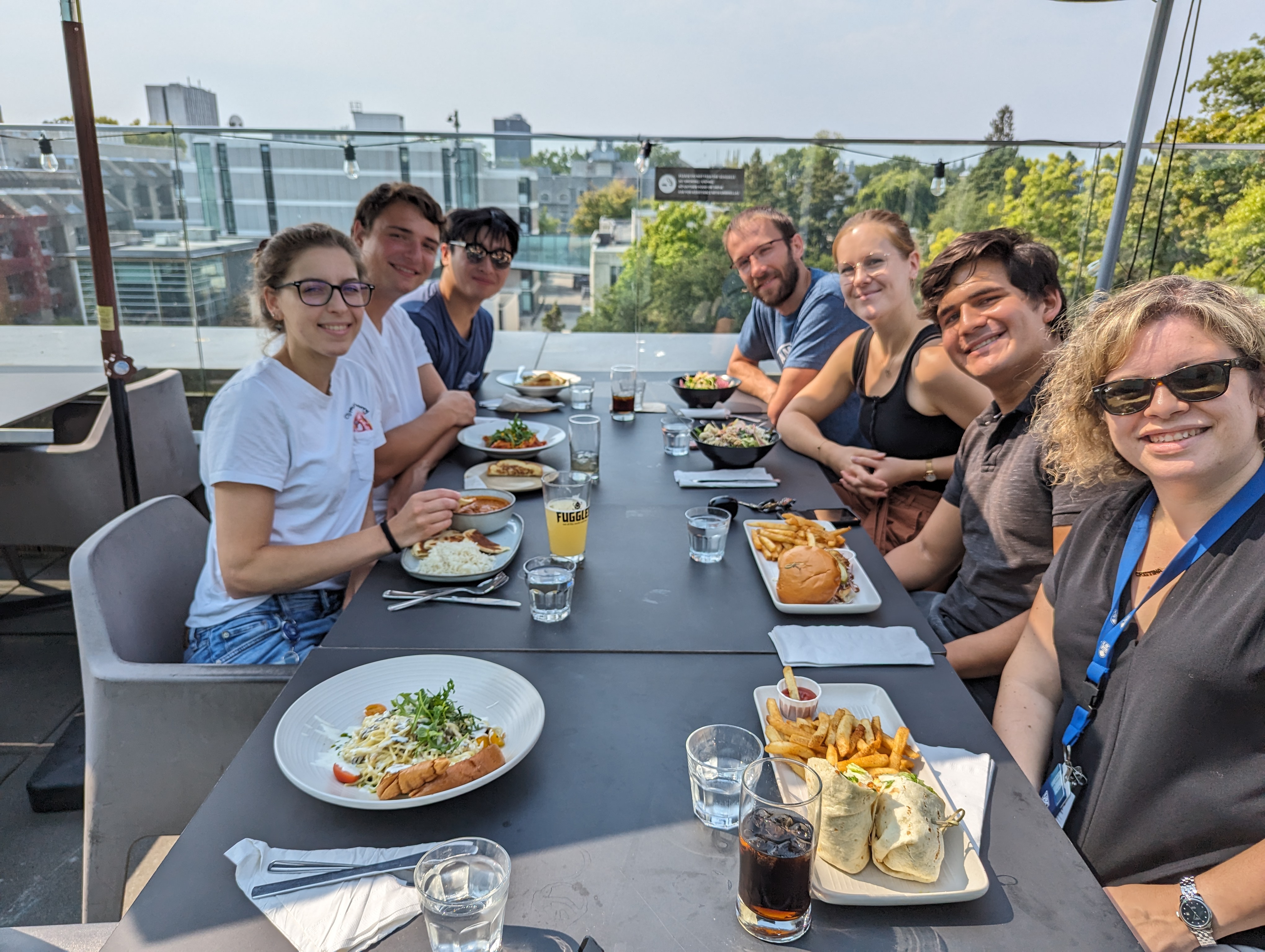
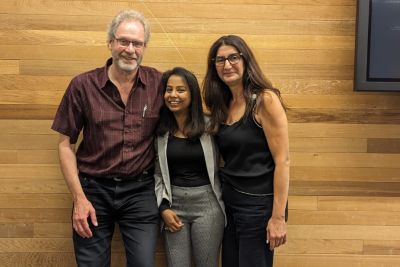
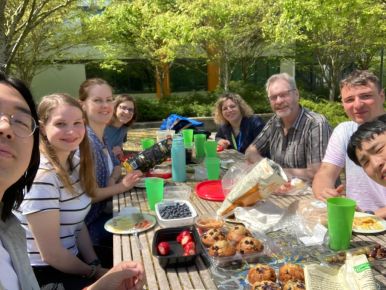
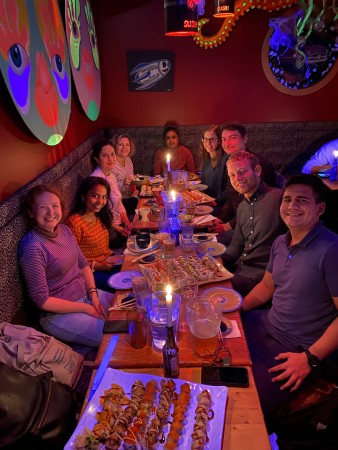
 sm.jpg)
